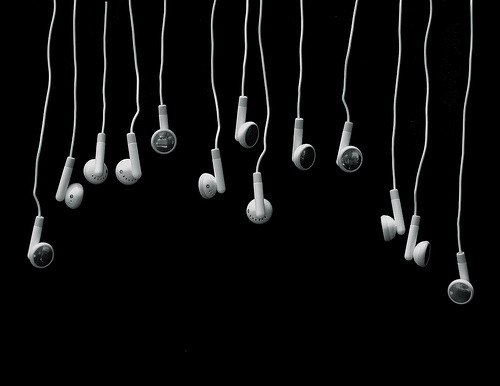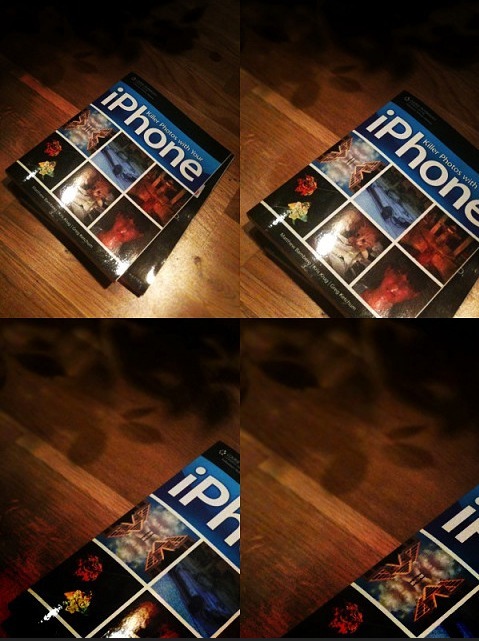You did something interesting recently.
I wanted to share a few links to things that are related to Screenshots of Despair, as well as to the general idea behind this blog.
-This Nevolution post, titled “Mood-board of Unknown Tumblrs” says some interesting things about emotion and the New Aesthetic, name-checking Webcamtears (a project whose editor also runs La Gazette du Mauvais Gout), Rich Kids of Instagram and Rob Walker’s Pergoogle. (Close readers will recall that Mr. Walker gave this site a huge boost when he wrote about it for Design Observer.)
About SoD, Nevolution says: “It’s the most interesting of the bunch, but it’s the one I feel least comfortable writing about. It’s the smartest of the bunch but also the one I feel least able to articulate.” This is pretty much what I’ve been striving for in every aspect of my life (yay, total inscrutability!), so it’s wonderful to read.
-Screenshots connoisseur Hayley Pearce sent in this article about skeuomorphic design, and the interaction and tension between the physical world and the digital one. Mr. Walker (cited above!) has also tackled this topic, and very well.
-Screenshots also got a little mention on Lost at E Minor.
-Panacea: A Screenshots reader submitted this site. It has a MAKE EVERYTHING OK button. Maybe it will make you feel better?
As always, PLEASE submit stuff via the Submit button on this blog or by e-mailing me at josh.kimball@gmail.com. All submissions are appreciated!
Creative Review – UK Music Video Awards 2011 Winners
Creative Review – UK Music Video Awards 2011 Winners
The UK Music Video Awards are voted for by people working in and around the promos industry, so are viewed as an insider’s take on the best music video work of the year. This year saw a widening of the awards to include international winners in every category, alongside a favourite UK winner. Canada, who were profiled in the October issue of CR (read the article here), also picked up the Best Pop Video – International award for Oh Land by White Nights and the Best Art Direction and Design gong for Invisible Light by Scissor Sisters (both shown below).
Great to see Invisible Light getting some love 😀
Designing the books of the future
The simple page
Designing a book is largely an exercise in balance: Balance of letterforms and surrounding space in relation to the physicality of a book. In Hochui and Kinross’ Designing Books, they discuss the uniqueness of book symmetry:
The axis of symmetry of the spine is always there; one can certainly work over it, but not deny it. In this respect book typography is essentially different from the typography of single sheets, as in business printing, posters, and so on.
The spine gives book reading a kinetic motion not found in unbound sheets of paper. Forward and backward movement within a book happens because of the spine. And so designers erect scaffolding—text blocks and running heads and other literary accoutrements—around this keystone axis. It is the natural balance point of a spread. The implicitness of this means publishers have largely achieved functional book design right from the beginning: the forty-two line columns of thick type in the Gutenberg bible, even today, are quite a marvel of typographic balance.
If the axis of symmetry for a book is the spine, where is it on an iPad? On one hand, designers can approach tablets as if they were a single sheet of “paper,” letting the physicality of the object define the central axis of symmetry—straight down the middle.
On the other hand, the physicality of these devices doesn’t represent the full potential of content space. The screen becomes a small portal to an infinite content plane, or “infinite canvas,” as so well illustrated by Scott McCloud.
Fig 1. The infinite canvas
Regarding iPad book design, designers are left with a fundamental question they must answer before approaching this device: Do we embrace the physicality of the device—a spineless page with a central axis of symmetry? Or do we embrace the device’s virtual physicality—an invisible spine defined by every edge of the device, signaling the potential of additional content just a swipe away?
Fig 2. Every which way is up
Presently there’s a clear rift in iPad editorial design. There are those applications—iBooks, Kindle, New York Times, Wired, The New Yorker—that attempt to transpose a type of print design built around physical cues to a screen lacking those same cues. They treat the boundaries of the iPad screen like the edges of a printed sheet of paper—sometimes awkwardly forcing content into columns which aren’t optimized for the canvas.
These applications are often characterized by an imposition of arbitrary, non-semantic breaks in content in the name of pagination. Oliver Reichentsien, in his essay iPad: Scroll or Card breaks down use cases for the two models. He provides metrics for determining when to scroll or paginate, and also how the very experience of reading changes between them.
Inconsistent metaphors
Fig 3. The New York Times app: swipe to the left to continue reading this article
Fig 4. The New Yorker app: swipe up to continue reading this article
The inconsistency in which the physical page is mimicked on a tablet leaves readers disoriented, unaware of their position in the context of the greater whole, and unable to easily scan back.
On the other side we have reading applications like Instapaper and Mobile Safari (Mobile Safari being the most fundamental of reading applications on our iDevices) that embrace the boundless nature of the iPad screen. The physical edges don’t bind the text blocks.
Very rarely does one find an application that masterfully merges these two schools. Inkling, however, is one such example of a reading application that straddles the new and old—chunking content in an intuitively predictable and consistent manner within and across chapters, thereby grounding the user via thoughtful navigation. And doing so beautifully, with a confident awareness of the container.
What’s so exciting about all of this is that even now—at the start of 2011!—we’re still refining and iterating on optimal reading solutions to these issues of digital editorial design.
As designers, we need to ask ourselves: Where does our axis of symmetry most rationally lie for the content at hand? From where is the kinetic element of this content born? What’s the rationale behind specific layout and navigation choices for this content and will they be thoughtlessly intuitive to the reader?
We can start with these questions. Then, we can take our content, and—piece by piece—place it back onto this new canvas with considered awareness. These are the first steps to treating the iPad as more than a simple page.
This is just a small excerpt from an absolutely FANTASTIC piece by Craig Mod. I am so excited to see how we can use these new platforms to expand and enhance our reading expierences rather than just stubbornly cramming print layouts into them.
You’re In A Bubble*

Eli Pariser has an intriguing idea – that the increasingly “personalisation” of the internet is trapping us all in echo chambers, hearing only opinions we already agree with, and narrowing our interests.
Pariser, the board president of citizens’ organisation MoveOn.Org, points to Google’s switch to personalised search in 2009 as the moment when “the Filter Bubble” became an urgent topic of discussion. There is no longer an “objective” Google – you receive search results based on your previous searches and other information – and the company reportedly measures 57 “metrics” about you every time you search.
What is a “filter bubble” and why we should be worried about it?
It used to be the case that you’d Google something and I’d Google something and we’d get the same results. Now that’s no longer true. Many sites, including Google, predict we want to see based on personal data that we’ve given them. The filter bubble is the personal unique universe of information that results when we have these algorithms following us around and sifting through data for us and showing us what they think we want to see.
It’s a problem because it’s happening invisibly; you don’t know how your view of the world is being edited – you can get a distorted picture and not even really know it.
Is the filter bubble made worse because of the dominance of a few companies over the net – Google, Apple, Microsoft, Facebook?
Absolutely. Google and Facebook are especially prominent, and Microsoft is a close runner up. These companies have an incredible power to edit and filter what we see and what we don’t. But they don’t think of themselves that way, they don’t seem to be taking much responsibility for that power that they’ve accumulated.
So the problem is that you can’t see what you’re missing?
Yes. You don’t know what the editorial sensibility is: whereas when you pick up the Guardian you know what the editing role is. But you don’t know who Google or Facebook think you are, and you don’t know in what way they are editing information, so you really don’t know what’s being edited out.
Do you think, for example, Facebook’s Mark Zuckerberg has a distinct political worldview?
I don’t think that they’re doing this to shape politics, I think the contrary it’s sort of a wilful ignorance of the critical implications of this stuff.
These guys are engineers, and they tend be very wary of the messy, social, consensus-orientated culture of politics.None of these guys would have ever run for office. But here they are running these huge companies that are making decisions that apparently aren’t political. But for the fabric of society they do have really important repercussions.
I’m sure journalists would agree that not all of the results of search-engine optimisation [writing headlines that use popular search terms] are positive.
If the way that you get to a large audience is having a headline that people will click ‘like’ on a lot on Facebook, that changes the kind of headline you write – because you literally don’t want it to be a downer.
I think the “like” button has a really significant effect on both what is produced and what is distributed. it’s not a neutral word. And so, you know, a story about someone overcoming the odds and surviving their fight with cancer gets lots of “likes” – but the war in Libya? That’s harder to click “like” on.
Is there a filter bubble on Twitter – because you only follow people similar to you?
Twitter, until recently, has been bucking this trend somewhat in that it doesn’t make a lot of personalised decisions for you. One of my jumping-off points with the book was the fact that on Facebook I was being shown updates only from my Facebook friends whose political views I agreed with – the others were being edited out, essentially. That doesn’t happen on Twitter – I see the conservatives as well as the liberals. I get to choose.
Do you think that we will outgrow this obsession with personalisation and instant gratification?
I feel hopeful that people are shocked when they hear that this is happening. The more it’s bought to people’s attention, the more [companies] will be pressured to develop products that give people much more fulfilling media.
Personally, where do you get your news from these days?
I find Twitter very helpful because it does allow me to get a taste of a lot of different information in the world. I also rely a lot on standard newspapers, the New York Times and The Washington Post I think still do a very good job. I use Google News and I use Facebook, so I don’t want to just go backwards.
So it’s not a case of “ban Facebook and we’ll be fine”?
No, the question is how do you make the new 21st century media as good as the best of the earlier centuries’ media.
Presumably the only way to do that is legislation.
Some of this change can be produced by consumers. When people get to know this is happening, they do want a change. It’s one of the frustrating conversations I get into with engineers at these companies where they say: “Nobody’s demanding better tools on this ”. You have to know [about them] first.
There is a legislative component as well, which is about the updating the laws around personal information to reflect this new world in which you click in one place and that ripples out. It starts with giving people better control over their own personal information. If the basis of the web is going to be that we hand over all this personal data – which is valuable – in exchange for services then we need to understand the value of the data.
What change would you like to come out of publishing the book?
The best scenario would be that people understand how their information is filtered in a more serious way so that they can make better choices.
The Filter Bubble is out now (Penguin, £12.99). For more information, visit thefilterbubble.com.
This is a fascinating subject because it’s not as simple as being dominated by some cartoon omni-present villain. (Although there is certainly a conversation to be had about that – what should be regulated, should we regulate and who on earth is impartial and knowledgable enough of the technology to do it?) People make a fair amount of noise about targeted advertising because they don’t like the idea of being advertised to in general – but when it comes to personalised searches or the ability to self-select the information dissemenated to them the water becomes muddier.
People have always done this to an extent of course – you read the the paper that shares your political or world view, you watch tv channels that show the programs you like – but increasingly the internet is allowing us to live our lives almost completely free of debate, challenge or dissenting voices.
While there are many implications in how this could be controled for political or monitary gain I’m almost more interested in how we are already abusing it ourselves. It’s as though we are already starting to live in many simultanious, parallel, virtual worlds rather than one shared one. I’m certainly not preaching from on high about this – I’m as guilty as the next girl when it comes to filling my online networks with things that aleady interest me – but I’m curious, if not nervous to see where it might lead..
*and yes, that is a Geri Halliwell reference.
The Truth About Cutting the Cable TV Cord
The Truth About Cutting the Cable TV Cord

For better or worse, television requires very little effort on the part of the user. Aside from changing the channel or looking at the onscreen TV guide, television is just “there.”
Connected devices, on the other hand, demand a lot more user effort. Viewers have to make conscious choices about what content they want to watch. This is fine if someone wants to watch a specific movie or TV show, but it can be less satisfying for the channel surfer. There is much less serendipity built into the current generation of connected devices.
As someone who has never had a satalite contract and has not had ‘TV’ for nearly a decade I am fascinated to see where ‘connected TV’ (as the article refers to it) goes over the next 5 years.
Ironically in the last 6 months I have moved back to FreeView and largely away from ‘connected TV’ due to various issues with broadband speeds, contracts and prices. Currently I am using a mi-fi unit – a very exciting piece of technology that I think may well change the face of Wi-Fi – and allthough the speed is fine the data cap is prohibitive.
I hate FreeView though because of everything ‘TV’ that it brings with it – the constant shouty adverts, the osmosis dripfeed of things and people I really don’t care about and the inherent lazy channel surfing that despite my best intentions I still end up doing.
It does sound however that for ‘connected TV’ to succeed it will end up taking on most of the characteristics (and evils) of regular TV – but that will only hold true I suspect of the major services like Hulu and integrated solutions like Google TV. I hope there will still always be those oasis’ of calm like the BBC iPlayer and 4OD out there.
As soon as I can afford to increase my Wi-Fi package I will gleefuly ditch the little black box and in the meantime try my very hardest to Switch Off My Television Set and Go Do Something Less Boring Instead..
Time goes by so slowly..

In the autumn of 2009, with various knockoff cover versions of Shakira’s ‘She Wolf’ scaling the charts before Shakira’s own version of the tune had even been released, we did a thing for The Guardian about how soundalike versions of tunes were taking over iTunes. “Labels have now lost control of their most precious marketing device, which teased fans with radio play, video airings and TV performances, creating demand months ahead of a single’s release,” we wrote. “Illegal downloads, and this latest wave of covers, mean that any thirst a label creates can be instantly, unofficially quenched.”
Well this weekend it was announced that in order to combat piracy (ie make more/lose less cash) Sony and Universal will be moving to an ‘on air, on sale’ model. As soon as a song is played on the radio, it’ll be available to purchase.
The timing is pretty perfect: following last Tuesday’s official online and radio premiere of the Britney single ‘Hold It Against Me’ Sony released the track for sale in most of its major territories. At one point, not long after release, the song was at Number One on iTunes in 17 different countries.
That didn’t happen in the UK.
In the UK, Britney’s label decided on a February release date. As well as unnecessarily putting Britney head to head with Lady Gaga’s new single – a foolhardy move for any act – the decision also meant that UK fans would have to wait a month to buy the song. Well, of course, they wouldn’t have waited a month. Although they would happily have spent a quid on a legal download, fans ended up illegally downloading the track, or legally listening to the track on YouTube. Either way, by the time February’s official release would have come around, the legal release would have been purchased by only the most hardcore Britney fans – the ones bothered by the single’s chart placing. Everyone else would probably have moved on.
Finally! Forward progress! This has been needing to happen for such a long time..
It’s not just about instant gratification either (well, not entirely) it is also about removing the insanity of staggered teritory based releases in the internet age.
Also for those of us who spend the lead up to big releases squinting at the computer with our fingers in our ears trying to avoid leaks and demos this might help ease up the deluge.
From a fake Lady Gaga CD to a thumb drive that is a pocket-sized bombshell – the biggest intelligence leak in history

An innocuous-looking memory stick, no longer than a couple of fingernails, came into the hands of a Guardian reporter earlier this year. The device is so small it will hang easily on a keyring. But its contents will send shockwaves through the world’s chancelleries and deliver what one official described as “an epic blow” to US diplomacy. The 1.6 gigabytes of text files on the memory stick ran to millions of words: the contents of more than 250,000 leaked state department cables, sent from, or to, US embassies around the world.
“I would come in with music on a CD-RW labelled with something like ‘Lady Gaga’ … erase the music … then write a compressed split file. No one suspected a thing … [I] listened and lip-synched to Lady Gaga’s Telephone while exfiltrating possibly the largest data spillage in American history.” He said that he “had unprecedented access to classified networks 14 hours a day 7 days a week for 8+ months”.
I realise this is actually a rather serious story – but I have to admit I’m still giggling at ‘lip-synched to Lady Gaga’s Telephone while exfiltrating possibly the largest data spillage in American history’.
Our Lady gets everywhere 😉
Book Review: Killer Photos with Your iPhone by Matthew Bamberg, Kris Krug and Greg Ketchum

Since getting my first iPhone I find I am using it to take almost all my photographs (bar those that require particularly high-res or studio quality) partly because of convenience but largely because of the amazing options for in-phone photo editing and sharing. So it was with great excitement that I received my copy of of ‘Killer Photos with Your iPhone’ through the post..
“Killer Photos with Your iPhone shows students how to take fantastic pictures using the camera built right into their iPhone. Because of its portability and unique capabilities, the iPhone camera is now one of the most popular digital cameras on the market, and this book shows you how to do everything from taking simple pictures to using apps to snap and create innovative images. You’ll find information on the basics of shooting with an iPhone, including how to aim, compose, and focus your shots, as well as shooting within an app platform, and even post-processing. Many of the most popular photography apps are covered, and explained option-by-option with full-color images that allow students to see the progression of the app all at once instead of step-by-step. Covering both the 3G and 3GS iPhone models, this book will have students shooting, editing, and sharing killer photos in no time!”
The first section of the book is aimed at beginners learning the basics (both of the iPhone specifically and photography in general) however there are lots of handy tips and hints that seasoned users may find useful too.
However it’s the second half of the book that I personally got the most out of. It covers more detailed issues such as dealing with various kinds of lighting (often one of the few real problem areas of the iPhone camera) and, most interestingly for me, guides to post-processing apps such as Photoshop.com, CameraBag, PhotoForge, FX Photo Studio and Tiffen Photo. The book goes into each featured app in great detail and as well as discovering a few apps I hadn’t heard of I also learned quite a few new things about ones I already used.
I really enjoyed this book – I found it very easy to read and useful. The language is engaging and informal throughout (not too geeky for the casual gadget owner) but at the same time not as forcedly ‘humorous’ as the Dummies guides. I would definitely recommend it to anyone with an iPhone regardless of knowledge base.That said, I would particularly recommend it to any iPhone users who are new to photography as well as it really frames iPhone photography within improving your photography skills in general.
Follow the authors on Twitter >>
As a side note you can see some of my own iPhone photography and art here and a ‘phone art’ event that I helped organise here.



